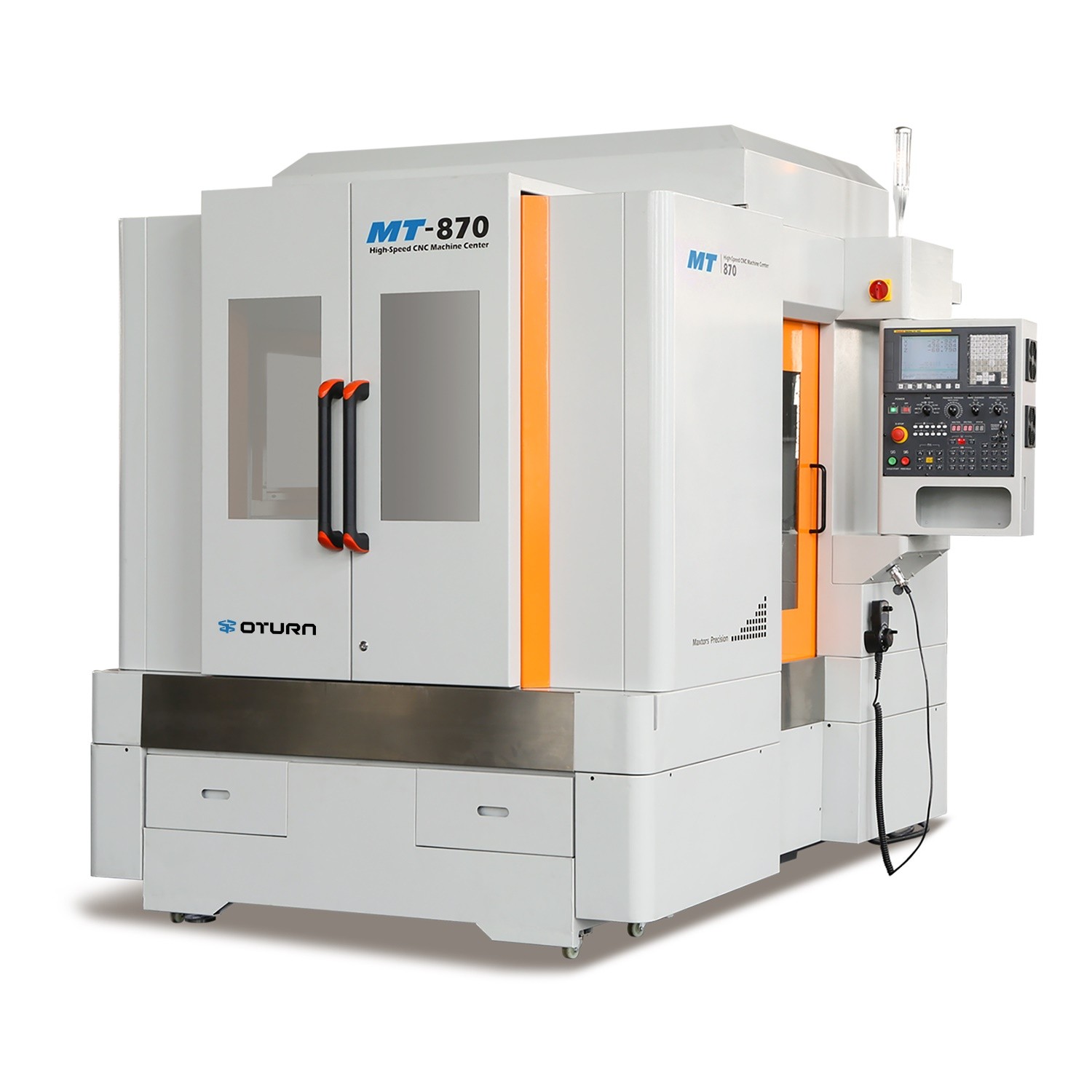In modern manufacturing, especially in high-precision fields such as aerospace, automotive, medical devices, and mold making, micron-level machining accuracy has become a critical benchmark for equipment performance. High-speed CNC machining center, as key equipment for efficient and high-precision machining, are widely used in the manufacturing of precision parts. So, how exactly do high-speed CNC machining centers achieve micron-level machining accuracy? This article will provide a detailed analysis from multiple perspectives.
How Does Machine Structure Design Affect Micron-Level Accuracy?
The rigidity and stability of the machine structure are the foundation for achieving high-precision machining. High-speed CNC machining centers typically use integral cast iron or polymer concrete beds, optimized through Finite Element Analysis (FEA) to maximize machine rigidity and vibration damping. A highly rigid machine can effectively resist deformation caused by turning forces, ensuring dimensional stability during machining.
Moreover, thermal deformation is another major factor affecting machining accuracy. Machine designs incorporate thermal insulation, cooling circulation, and temperature sensors to control temperature variations in critical components, preventing errors caused by thermal expansion and maintaining the geometric stability of the machine.
How Does a High-Precision Spindle System Ensure Machining Accuracy?
The spindle is the core component of a machining center, and its precision directly impacts machining quality. High-speed CNC machining centers are equipped with high-speed, low runout (radial runout) spindles, often using ceramic or hybrid ceramic bearings to reduce friction and heat generation, thereby improving spindle stability.
At the same time, spindles usually feature active cooling systems, such as oil or liquid cooling, to maintain a constant temperature, preventing axial deviation and radial runout caused by temperature rise. This ensures the stability and concentricity of tool rotation, achieving micron-level machining accuracy.
How Does the Motion Control System Achieve Precise Positioning?
Achieving micron-level machining also depends on high-precision motion control systems. High-speed CNC machining centers use high-resolution linear scales and encoders to provide real-time feedback of each axis position, with resolutions reaching sub-micron levels.
Combined with advanced CNC controllers (such as FANUC, Siemens), closed-loop control technology dynamically adjusts axis movements to compensate for mechanical backlash and errors. High-performance servo motors provide strong torque and rapid response, ensuring precise positioning even at high speeds.
What Impact Do Tooling and Tool Management Have on Accuracy?
The quality and management of turning tools are crucial to machining accuracy. High-quality carbide or ceramic tools have sharp turning edges and excellent wear resistance, reducing turning force fluctuations and vibration, thereby improving surface finish.
Modern high-speed CNC machining centers are equipped with automatic tool changers (ATC) and tool measurement and compensation functions, which monitor tool wear and breakage in real time, automatically adjusting machining parameters to maintain stable tool conditions and avoid dimensional deviations caused by tool abnormalities.
How Does Optimizing Machining Parameters Improve Accuracy?
Reasonable machining parameters (spindle speed, feed rate, turning depth) effectively reduce turning forces and workpiece deformation. High-speed CNC milling machine typically feature adaptive control systems that monitor turning forces and vibrations in real time, dynamically adjusting parameters to maintain optimal turning conditions.
Additionally, advanced CAM software is used for toolpath planning to avoid sharp turns and sudden changes, ensuring smooth tool movement, reducing mechanical shocks and vibrations, thus improving machining accuracy and surface quality.
How Does Thermal Error Compensation Ensure Dimensional Stability?
Thermal error is a significant factor affecting micron-level accuracy. High-speed CNC machining centers are equipped with multiple temperature sensors that continuously collect temperature data from key machine components.
By establishing thermal deformation mathematical models, the CNC system can predict errors caused by thermal expansion and automatically adjust the toolpath, achieving dynamic thermal error compensation to ensure dimensional stability and consistency during long machining cycles.
How Important Is Environmental Control for Micron-Level Machining Accuracy?
Even the best machine performance can be affected by environmental factors. Temperature fluctuations, humidity changes, and external vibrations can all cause machine deformation or measurement errors.
Therefore, many high-precision machining workshops adopt temperature- and humidity-controlled environments, equipped with vibration isolation foundations and damping devices, minimizing environmental interference to ensure stable machine operation and sustained micron-level machining accuracy.
Conclusion: How Do High-Speed CNC Machining Centers Achieve Micron-Level Accuracy?
High-speed CNC machining centers achieve micron-level machining accuracy through a combination of structural optimization, high-precision spindles, precise motion control, quality tooling management, intelligent machining parameter adjustment, dynamic thermal error compensation, and strict environmental control. For manufacturing enterprises pursuing high quality and efficiency, choosing high-speed CNC machining centers equipped with these technologies is key to enhancing product competitiveness and production efficiency.
OTURN is committed to providing customers with high-performance, high-precision high-speed CNC machining center solutions. Our products integrate advanced 5-axis simultaneous technology, intelligent thermal error compensation systems, and automated tool management, widely applied in aerospace, automotive, mold making, and new energy fields. With outstanding technical strength and comprehensive after-sales service, OTURN helps enterprises upgrade manufacturing capabilities and enhance core competitiveness.
Post time: Jul-15-2025








